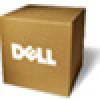Dell PowerConnect Brocade M6505 Brocade 7.1.0 Access Gateway Administrator's G - Page 13
About This Document, How this document is organized
 |
View all Dell PowerConnect Brocade M6505 manuals
Add to My Manuals
Save this manual to your list of manuals |
Page 13 highlights
About This Document •How this document is organized xiii •Supported hardware and software xiv •What's new in this document xiv •Document conventions xv •Notice to the reader xvi •Key terms for Access Gateway xvii •Additional information xviii •Getting technical help xviii •Document feedback xix How this document is organized This document is a procedural guide to help SAN administrators configure and manage Brocade Access Gateway (AG). This preface contains the following components: • Chapter 1, "Access Gateway Basic Concepts" describes the Brocade Access Gateway and provides an overview of its key features. • Chapter 2, "Configuring Ports in Access Gateway Mode" describes how to configure ports in Access Gateway mode. • Chapter 3, "Managing Policies and Features in Access Gateway Mode" describes how to enable policies on a switch in Access Gateway mode. It also provides information on how to set up failover and failback, and discusses how trunking and Adaptive Networking work in AG. • Chapter 4, "SAN Configuration with Access Gateway" describes how to connect multiple devices using Access Gateway. • Appendix A, "Troubleshooting" provides symptoms and troubleshooting tips to resolve issues. Access Gateway Administrator's Guide xiii 53-1002743-01















